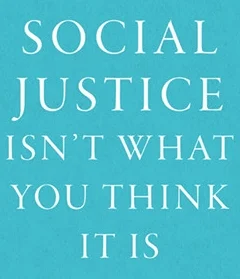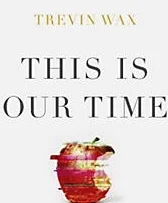Recognizing that Harvey Cox is, at least from my conservative Evangelical position, a liberal scholar, I picked up his recent volume, How to Read the Bible with some interest and hope for a fruitful conversation.
This is a popular level book, written with few footnotes and more as a summary of Cox’s religious experience than as a means of engaging in serious debate.
As such, Cox’s audience appears to be Christians who have not engaged with Scripture seriously and wonder what method the wise sage who has spent a long career proclaiming a version of progressive Christian theology from the respected halls of Harvard Divinity School might encourage them to use. It is, in reality, an apologetic for a liberal approach to Scripture from a post-modern liberal Christian. This statement is not meant in the pejorative (as the label liberal often is) but to clarify my understanding of the author’s actual intent, which is distinct from what he may have actually accomplished; according to his own hermeneutic, his accomplishment will be evaluated as something distinctly different based on the one who actually reads the volume.
Summary
How to Read the Bible is a layman’s book on hermeneutics. It has assumptions (often exposed, but seldom stated) and shows how to apply them to the text of the Bible.
After a personal introduction, which places the book in the context of Cox’s faith journey, there are ten chapters in the text. In them Cox walks through his method of reading of Genesis, Exodus, Joshua, Job, the prophets, two chapters on the Gospels (though one ignores John entirely), the Pauline Epistles, and Revelation. The tenth chapter is a summary of Cox’s hermeneutic, which is focused on a contemporary reading of the text. The book has a conclusion in which Cox answers the logical question that arises from his deconstruction of Scripture, namely, “Why should we read the Bible at all?”
Qualification
For Cox, this book is no doubt a very personal book; in fact, the first person pronoun and his own anecdotes prevent reading it any other way. He is explaining how he reads the Bible and gains some spiritual value from it. As such, it would be easy to turn these critiques into accusations against Cox’s faithfulness. That is not my goal. Cox no doubt holds the faith commitments that he has, which have some ties to historic Christianity, sincerely. This book helps to reveal what shape they have and why, but the book does not lead me to question the fact that he believes something about God that approximates a form of historic Christianity and is very personal to him.
Despite this personal nature of the book, he did publish it publicly, which means that it is fair game for analysis and critique. This is not a private expression of faith that, like a discovered diary, should be left alone until the author is deceased.
Assumptions
The logical question that arises from this text on how to read the Bible is why it should be read at all. This is a serious accusation that Cox seems to recognize at the end of the volume and begin to address, but, to my mind he fails.
Cox begins with the assumption that the Bible is solely a human book. In fact, given the option, it seems fairly clear that Cox recommends discarding the notion that any biblical data is factual. He allows that Jesus and Paul did exist, but nearly every other apparent factual claim in Scripture is best rejected at first blush. If some things in the Bible actually happen to correspond to historical truth, this is coincidental to the spiritual truth of Scripture and largely irrelevant.
Additionally, biblical scholarship that rejects traditional understandings of the text or modifies what the text seems to say about history are to be preferred over other scholarships. Throughout the volume, Cox consistently refers to his preferred group of scholars as “the best scholars” or “most scholars.”
In fact, one of the prevailing assumptions that seems to drive Cox’s hermeneutic and general approach to biblical studies is that anyone who accepts the prima facie reading of the Bible is intellectually deficient or ignorant.
For example, the hypothesis that has recently been published that presents a late domestication of camels is valuable explicitly because it undermines the historicity of Scripture and because “it require[s] one to move beyond a literalistic view of the Bible to a more mature comprehension.” (pg. 44) In other words, if only those that believe the Bible to be factually accurate would read the New York Times, which popularized the recent archaeological theory, they wouldn’t be so immature as to believe that Scripture was true. The problem is that the archaeologists conclusions were drawn from a limited data sample and appears to have been interpreted by the New York Times to maximize circulation with a controversial headline rather than critically interact with the study.
Similarly, just a few pages later, Cox discards the notion of the miracle of manna in Exodus by arguing, “The meaning of the ‘miracles’ of Exodus is that these people [i.e., the Israelites of the 7th century B.C.E who he believes wrote the Pentateuch] believe that it was through God’s grace and justice that they were escaping from slavery, and they told their story in their own idiom. Mature and imaginative students of the Bible try to get inside that worldview. They do not simply reject it as superstitious or recast it in terms of modern, if often improbable, scientific rationalizations.” (pg.47)
In other words, speaking from the enlightened cultural perspective of the 21st century, we can know with certainty that these miracles did not happen. This solves two problems simultaneously: (1) It eliminates the weird pseudo-scientific theories about how pre-scientific people may have misinterpreted natural phenomena; (2) It eliminates the need for believing in a God who can do miracles.
While I am thankful for the first result, the second result seems unnecessary unless one has accepted the reigning paradigm of naturalism, which allows for only regularity in the natural world. In other words, it requires that God, whatever that being is, does not interfere in history.
From the Pen of Skeptic
At times, Cox seems to be reading the text as a scoffer. He describes the account of the spies of Israel and Rahab as a “dinner-theater fluff piece” (pg. 69) Thus we should read the accounts of the conquest of Canaan much like school boys read Virgil’s Aeneid (pg 76); they're interesting and have some literary value, but certainly aren't true because, after all, a recent book argues that the entire Israelite history may be incorrect, since the Israelites were likely just Canaanites who banded together against their neighbors and created an elaborate nation-myth to justify their actions (pg 76). Since the Pentateuch is just political propaganda, Cox writes, “I do not believe it is necessary for current readers of the Bible to slog through all these grisly verses [about the reasons given by God for destroying the Canaanites.]” (pg. 74)
This brings back that pertinent question that came to my mind while I was reading this volume, why would you read it anyway? I’ll get back to that in a moment.
Cox continues his way through various representative genre’s of Scripture. Job is “explicitly ‘fictional’" (pg. 79); the prophets have meaning according to how modern revolutionaries decide to use them (though not in an absolutely unconditional sense) (pg. 105); the canonical gospels are merely a result of the winning political faction; the synoptic Gospels are a composite of factually erroneous interpretations of history written too far after the events they depict to be remotely accurate; Paul likely didn’t write most of the letters attributed to him and things we find ethically objectionable are either his misunderstandings or later textual additions; and Revelation can be nothing more than an inspiring poem by a political revolutionary.
It is fair to note that few of these assertions are supported in the text; but it is also important to realize that this is not a scholarly volume. Cox merely assumes the validity of scholarship built on the so-called Higher Critical methods and ignores conservative scholarship as immature or poor. This is an evidence of his bias, but should not be counted as a criticism against his method in this volume.
Again, I wonder, why bother reading it if nearly everything that it reports is questionable?
Spiritual Benefit
Cox believes that there is spiritual benefit in reading Scripture. He intimates this throughout. It can inspire the contemporary reader to pursue justice. This he makes clear in the Introduction, where he recounts the inspiration that African American civil rights activists found in the Exodus stories. While he sat bored in his cell (having been arrested during the same demonstration), the segregated African American detainees preached to each other from the account of Moses.
This reading and contemporary application, he notes, is in accordance with the “full-orbed holistic way I have termed ‘spiritual.’” (pg. 8) But it isn’t clear that such a reading is possible once the reader has rejected the factual content of Scripture as mere political fiction.
In other words, if the Bible is just a human book, with a great percentage of it written for political purposes, then why should it be trustworthy for spiritual readings? Why would one trust Scripture more than a contemporary novel for spiritual information?
Cox wrestles with this in part toward the end of the volume, “Why should I spend any time writing yet another book about this strange old collection? One answer is that the Bible helps us to know who God is, and for many people, perhaps most, that is enough. But there is another reason. The Bible also helps us heed the counsel of Socrates to ‘know thyself,’ and the wisdom of all the religious traditions teaches that the knowledge of God and the knowledge of ourselves are inseparable.” (pg. 230)
Of these two reasons that Cox offers, it isn’t clear how the shreds of Scripture are helpful any longer in knowing God. He has taken pains to debunk the supernaturalness of God throughout the volume. Gone is the miracle-working God. Gone is the redemptive God that chose a people. Gone is the God that is holy and worthy of judging sin.
The second reason Cox presents is more true to what the tattered text of the Bible can do once it has been explained away by Cox’s “mature” hermeneutic. Once all of the parts of Scripture that conflict with the contemporary reader’s worldview are eliminate, what is left is a reflection of the individual from the ancient text. It isn’t clear why it would take over two hundred pages to explain this fact.
Conclusion
Cox’s book is an excellent example of the reader-response hermeneutic at work. He combines this post-modern approach that rejects a desire for objectivity with an acceptance of the validity of modernistic biblical scholarship to work his way through many genre’s of Scripture.
This is a helpful book because Cox explains what many Christians do on a regular basis. What is masked in the liberal pulpit is made clear in this volume.
In the end, the deconstruction of Scripture and rejection of the supernatural reminds me of C. S. Lewis’ description of creating “men without chests.” They are bidden to be moral, but the means for their morality has been removed. Though this is not Cox’s purpose in writing the book, his demonstration of the failure of the liberal theological method has explanatory power for the slow death of many liberal churches.


























There’s no reason to doubt that Jesus was nailed to the cross. Ultimately, I trust what Scripture says about Jesus’s crucifixion because I also trust what it says about his resurrection. And that’s what we should be celebrating this week.